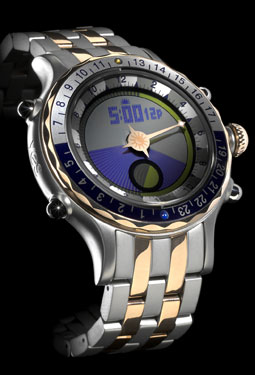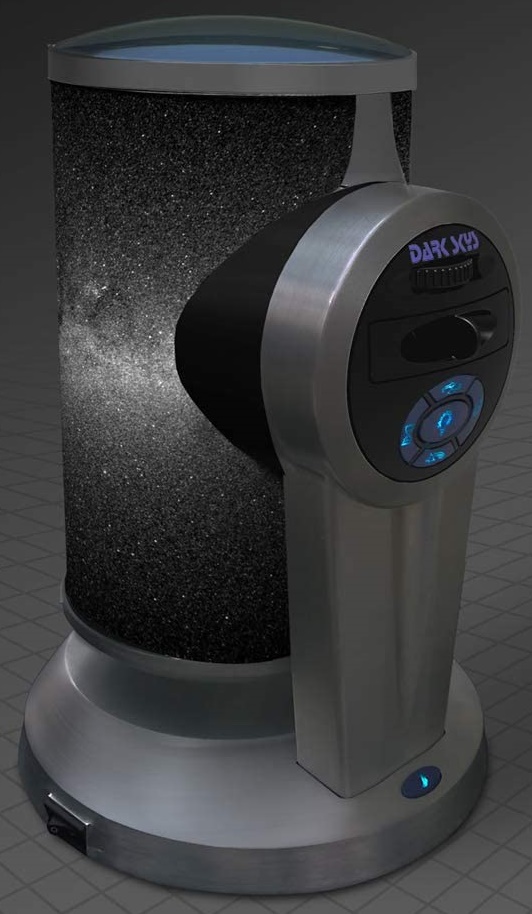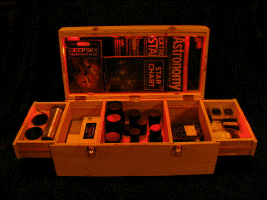- Details
- Category: Fun Equipment
Do you like "doing science"?
Are you interested in doing "real science"? Not experiments that show what researchers have done, but actual real science?
We are in an information explosion age.
Computers are good at doing a lot of things, but there are some things that minds can do that machines still cannot.
Perhaps the most used portal for hooking "amateur" scientists to "real" science is Zooniverse.org. It lists projects that need human brains to analyze data.
For example, in the Galaxy Zoo Project people can tell whether a galaxy's shape is spriral, elliptical, or weird better than a computer. They'll have you scroll through a bunch of galaxies and clicking a shape. Crowd-source the classification and then let the computers do the big statistical anaylsis and machine learning. It's real scientific research and just that simple.
Obviously, there are other more complicated projects, whole catalogs. A great way to learn science is to do real science. Jump in!
Do you like space travel? Do you want to build some rockets? Do you want to learn how rockets work without starting with the math? Kerbal Space Program is THE spaceflight dynamics GAME. From their description:
In Kerbal Space Program, take charge of the space program for the alien race known as the Kerbals. You have access to an array of parts to assemble fully-functional spacecraft that flies (or doesn’t) based on realistic aerodynamic and orbital physics. Launch your Kerbal crew into orbit and beyond (while keeping them alive) to explore moons and planets in the Kerbol solar system, constructing bases and space stations to expand the reach of your expedition.
Space Science Software is often Open Software - meaning it's available for you to use. The same tools "pros" use you can use. As with astrophotography, "pros" don't often have the time to go after non-approved projects.
Here's a great example from Scott Manley, who does a LOT of spaceflight videos on YouTube. In this video, Is Apollo 11's Lunar Module Still In Orbit Around The Moon 52 Years Later?, Scott shows how an amateur space fan answered a question that a lot of people asked but never followed up on. The link starts at the end, his summary, but start it from the beginning for the whole story.
- Details
- Category: Fun Equipment
There are recommendations all over the web comparing, evaluating and recommending astronomy equipment and accessories. A good portion of this website talks about equipment suitable for an inexpensive telescope program.
This page contains my personal recommendations for or comments about "fun" equipment. I share what I'm liking, suiting my interest and perhaps narrow needs. It's not intended to be a comparison of a product and its competitors. My intent it to highlight items that unique and without direct competitors.
I refrained from calling this page the "Toys" page, because, if I'm being honest, every piece of astronomy equipment falls into the "Toy" category. My focus here is for "non-essential" stuff that is primarily "fun". For example, I love my Nagler 31, but that eyepiece is essential and wondrous. It is fun, but it is fundamentally a serious thing.
My initial recommendations are:
- Astro-Devices Nexus: Direct Encoder-to-Wireless adapter
- YesWatch "Astronomy" Solar/Lunar Watch
- Dark-Skys Home Planetarium
- Wood Wonders Eyepiece Case
- "Window Scopes"
Planetarium App Guidance
Hand-held, character-based menu navigators are obsolete; immersive, telescope-tracking sky map navigation is the future.
If a picture is worth a thousand words, then look at this picture below and answer this question:
which interface is more intuitive?
Celestron, Meade and Orion have WiFi adapters so that you can augment their command-line handcontroller interface with Planetarium App Guidance (I use SkySafari).
AstroDevices.com offers a WiFI adapter for dob/encoder-based scopes.
I've had good luck with their inexpensive Nexus II adapater.
Below is a video (poorly shot with my phone, sorry) demonstrating SkySafari on iPad navigating a Meade Lightbridge 12 via the Nexus.
AstroDevices offers a full computer-plus-wifi Nexus DSC. It's more expensive, but it's a far more robust solution, eliminating the need for a standalong computer (like SkyCommander, ArgoNavis, etc.). I like the interface quite a bit more than most handheld computers. I don't need a manual to know how to use (the last thing you want to do in the dark is have to read a manual). It turned my Obsession/ServoCAT/ArgoNavis/SkySari system from something torturous to use to something fun again.
Yes Watch "Astronomy" Solar/Lunar Watch
| This is another "lifetime" piece of equipment. I really expect to be wearing one of these watches when I die (hopefully that won't be for a long time).
I really love this watch. Just from the information shown on the picture at the right I can see a crazy amount of information:
It really put me back in touch with the sun and the moon, and it's useable everywhere 24/7 (unlike the rest of my equipment). I'm so impressed with the interface, I devoted several pages to it. Here's my review on CloudyNights.com |
 |
Dark-Skys DS-1 Home Planetarium.
|
I don't own this yet, but it looks amazing. Imagine a realistic representation of The Milky Way - in your house! This is considerably more expensive than other home planetaria. Some of that is because they built an amazingly beautiful piece of hardware - see the Nightlight Mode. Part of it is because it's Chrome Disk show over 4 million stars! They do sell their 4-million+ star disks for the cheaper alternatives, but the bulbs of the cheaper are considerably dimmer. |
 |
Wood Wonders Eyepiece Case
- Details
- Category: Yes Watch
Longitudinal Offset (from Time Zone Reference)
| Here's Chicago, at the East of its Time Zone: | Here's Indianapolis, at the West of its Time Zone: |
|
The Sun Stone marks Sunset in Chicago. Note the almost one-hour shift for Indianapolis' sunset, which is consistent with their proximity, but differing time zones. |
|
- Details
- Category: Yes Watch
Yes Watch LCD Interface
Daylight Savings Time Offset
March 8, 9, 2014: Automatic Changeover to DST.
|
Standard Time. Note the sunrise/sunset symmetry |
Daylight Savings Time. Note the sunrise/sunset 1-hr rotation. |
November 1, 2, 2014: Automatic Changeover to Standard Time.
|
DST. Note the shorter days, with Solar High Noon later than 12:00p. |
Standard Time. Solar High Noon and 12:00p retaining only its Time Zone longitudinal offset. |
The Winter Solstice: special graphics!
